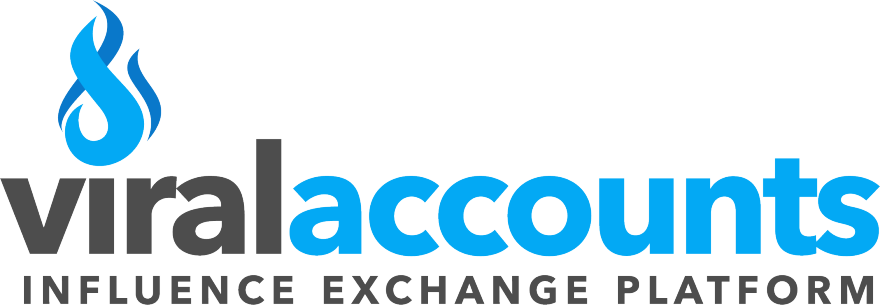Interesting Facts
I remember the first time I opened Twitter. It felt like stepping into a bustling marketplace filled with endless chatter—millions sharing thoughts, news, jokes, and fleeting moments as they happened. Over the years, as I watched individuals, brands, and movements leverage this platform, I realized Twitter was much more than just a timeline to scroll through. Behind the scenes lurk Twitter metrics—numbers and stats that reveal what truly grabs attention, what ignites conversations, and what ideas gain traction.
But what exactly are Twitter metrics? Why do they matter so much? And if you want to understand trends, engagement, and reach on this ever-shifting platform, which numbers should catch your eye? Let’s unravel these questions together.
Twitter Metrics: More Than Just Numbers
At first glance, Twitter metrics might seem like dry, technical data. Numbers can feel cold and impersonal. Yet each metric tells a story. They’re the footprints left by users in the vast digital marketplace—indicators of how messages resonate, communities grow, and ideas travel.
Whether you’re a casual user curious about who’s listening or a company trying to make sense of your audience, Twitter metrics act like a map in a seemingly chaotic social media world. They help you see which conversations are alive, where your voice fits, and how far your message reaches.
Put simply, Twitter metrics are measurable values showing how tweets perform and how users interact with content. These numbers reflect popularity, engagement, visibility, and, to some extent, the mood of the audience. To bring clarity, let’s look at the key metrics shaping Twitter in 2024, based on the latest insights and analytics tools. For those interested in deepening their understanding of analyzing these metrics, resources like Sprinklr’s guide on Twitter metrics offer comprehensive insights.
Follower Count: The Starting Point of Influence
Everyone knows followers. That little number next to your profile feels like a badge of honor—it shows how many people have chosen to get your updates. But what does follower count truly tell us? A large follower base has often been seen as a symbol of influence—a bigger crowd listening to what you say.
However, followers alone don’t paint the full picture. Imagine a town full of residents—just because there’s a crowd doesn’t mean everyone gathers around to listen to the town crier. Similarly, a high follower count doesn’t guarantee that your tweets are seen or spark meaningful exchanges.
Follower count is best considered alongside other metrics. Are your followers actively engaging? Are you reaching new people, or is your audience stagnant? Sometimes users with smaller, passionate followings see much stronger engagement because their content hits a nerve with a specific niche at the right moment.
Think of follower count as the foundation—it defines your potential reach, but not necessarily your impact.
Impressions: How Often Are Your Tweets Seen?
Impressions measure how many times your tweet has been displayed on someone’s timeline, in search results, or through retweets. If follower count is the size of the town, impressions are like how many passersby glance at your stall.
Seeing a tweet doesn’t mean action is taken. Impressions can skyrocket during viral moments or when a popular account shares your message. This makes impressions an essential metric for understanding visibility—how many chances your content had to make an impression.
I once noticed a tweet of mine gained thousands of impressions overnight after being retweeted by a well-known account. Surprisingly, engagement was far lower than expected. This taught me impressions show exposure, but not necessarily reaction or connection.
In the fast-moving world of Twitter, where hundreds of thousands of tweets compete for eyeballs every minute, impressions offer a glimpse into how far your content travels. For businesses or marketers wanting to track these nuances, platforms like Brand24’s blog on Twitter metrics provide useful tracking strategies.
Engagement Rate: The Heartbeat of Interaction
Engagement is what turns a passive viewer into an active participant. It includes likes, retweets, replies, clicks, and shares. The engagement rate compares these interactions to the total impressions or follower count, offering insight into how captivating your content is.
Why does engagement rate matter? Because it shows whether your tweets are reaching hearts and minds—not just eyes. A tweet seen by thousands but ignored is like a speech that falls on deaf ears. But when people reply, share, or click links, it means your message strikes a chord.
Engagement rates vary depending on content type, audience, and timing. Humor or provocative statements might stir up replies and retweets, while informative tweets might lead users to follow links or watch videos.
In many ways, showing your tweet asked a question, made a joke, or sparked curiosity—prompting people to act rather than scroll past.
Retweets: The Amplifiers of Your Message
Retweets are the most straightforward way Twitter amplifies your message. When someone retweets, they share your content with their own followers—like passing a note in class or handing out flyers in a busy square.
Retweets signal endorsement or agreement. They say, ȂThis is worth sharing,ȁ helping your voice reach beyond your immediate followers. The more retweets, the more your message gains momentum.
But quality matters too. A retweet by a celebrity, industry leader, or relevant influencer can catapult a tweet into a viral event and elevate the conversation. Retweets often serve as social proof, encouraging others to join the discussion.
Iȁve seen tweets suddenly snowball after a well-timed retweet, transforming a single message into a viral trend or movement.
Replies: Conversations Sparked
Replies are direct signs of engagement. Unlike likes or retweets, which can be quick taps, replies invite you into a dialogue. When someone replies, it shows they felt compelled enough to answer, question, or add their voice.
High reply volumes often reveal tweets that inspire curiosity, give offense, or stir debate. Brands and individuals alike track replies to gauge emotional reactions or identify topics needing thoughtful responses.
On Twitter, conversations often blossom in reply threads—branching narratives that share stories, arguments, or help resolve issues. Following these threads can provide insights into community feelings, emerging trends, or customer feedback.
Replies are the lifeblood of Twitter’s social pulse.
Reach: Who Could Potentially See Your Tweets?
Reach estimates the number of unique users who may have seen your tweet—not just total impressions, but distinct individuals.
Think of reach like the population living near your stall, while impressions are visits to your stall that might include repeat customers. For example, a tweet might have 10,000 impressions from 2,000 unique users, meaning some saw it multiple times.
Reach helps you understand if your message crosses beyond your current followers. If it stays within the same group, your content risks echoing in an echo chamber. Expanding reach is crucial when aiming to spread awareness, build new communities, or catch viral waves.
Factors influencing reach include follower count, retweets, the use of hashtags, and Twitter’s algorithm promoting content.
Monitoring and Tools: How to Access Twitter Metrics
Tracking these metrics has never been easier. Twitter’s own Analytics Dashboard (now part of X Analytics) offers a detailed overview of your account’s health without costing a cent. You can see tweet-level stats, engagement patterns, and follower trends over time.
For those who want more depth, numerous third-party tools fill in gaps. These tools offer historical comparisons, hashtag performance, best posting times, audience demographics, and sentiment analysis.
Marketers use these insights to tailor content: Are videos getting more engagement? Do polls spark conversation? Are morning tweets better than evening ones?
Experimenting with data-driven strategies allows users to build authentic connections while optimizing visibility. If you want to learn more about key Twitter performance metrics and how to track your success, Circleboom’s blog is a great resource to explore effective tracking methods.
Why Twitter Metrics Matter in 2024
Twitter today is a place for nuanced dialogue and instantaneous viral moments that can ripple across borders. With so many voices competing for attention, knowing how to read Twitter’s metrics is the key to understanding what resonates.
Whether you’re a creator seeking connection, a brand managing reputation, or an activist aiming to mobilize, metrics answer essential questions: Who notices me? What do they value? How far does my message travel?
In business, these insights feed into decisions on content, timing, and engagement tactics. Nonprofits use them to measure campaign reach and impact. Even everyday users benefit by learning what content sparks laughter, debate, or empathy.
An Example: From Metrics to Meaning
Picture a small nonprofit focused on climate change. Their follower base is modest, but they post timely, fact-filled content on the day of a global summit. Initially, their reach is limited.
Then, a prominent environmentalist retweets them. Suddenly, impressions soar. The engagement rate climbs as replies pour in—people sharing stories, opinions, and asking questions. Retweets amplify the conversation further. Reach expands outside the usual circle.
This organic momentum, informed by close attention to metrics, turns a simple message into a beacon for awareness. It’s like a grassroots movement gaining steam in the digital realm.
Navigating Challenges: When Metrics Mislead
While Twitter metrics illuminate important aspects of your presence, they don’t tell the whole story. Numbers can mislead if taken at face value or out of context.
Bots and fake accounts can inflate follower or engagement figures, giving a false sense of popularity. High impressions might include negative reactions or disinterest. Similarly, focusing only on viral potential might lead to superficial content lacking authenticity.
Balancing metrics with qualitative insights—reading comments, listening to followers, and evaluating emotional tone—is essential. Metrics are tools, not the message itself.
Final Thoughts: Embracing Twitter Metrics as Tools, Not Goals
Twitter metrics invite us to participate more thoughtfully and understand the rhythms of online conversation. Like a musician tuning instruments before a performance, these numbers help find harmony—not set rigid targets.
If you want to explore your own Twitter stats, start slowly. Notice which posts spark dialogue. Pay attention to what feels genuine and what falls flat. Develop an intuitive sense of when your voice resonates.
Ultimately, Twitter metrics reflect the evolving story of human connection in the digital age—how ideas spread, communities form, and conversations come alive. The numbers matter, but the stories behind them are what truly make this platform vibrant.
For those looking to expand their social media presence or acquire verified accounts, trustworthy services such as Twitter verification badge purchase can provide a professional boost to your profile authenticity. Additionally, if you are interested in buying or selling Twitter accounts, exploring dedicated marketplaces can be beneficial; for instance, selling Twitter accounts through reliable platforms ensures secure transactions and support.
What are Twitter metrics?
Twitter metrics are measurable values that show how tweets perform and how users interact with content. They indicate popularity, engagement, visibility, and audience sentiment.
Why is engagement rate important on Twitter?
Engagement rate reveals how captivating your content is by comparing interactions like likes, retweets, and replies to impressions or follower count. It shows if your message reaches hearts, not just eyes.
How can I monitor my Twitter metrics effectively?
You can monitor Twitter metrics using Twitter’s Analytics Dashboard or various third-party tools that provide deeper insights like audience demographics, hashtag performance, and sentiment analysis.

